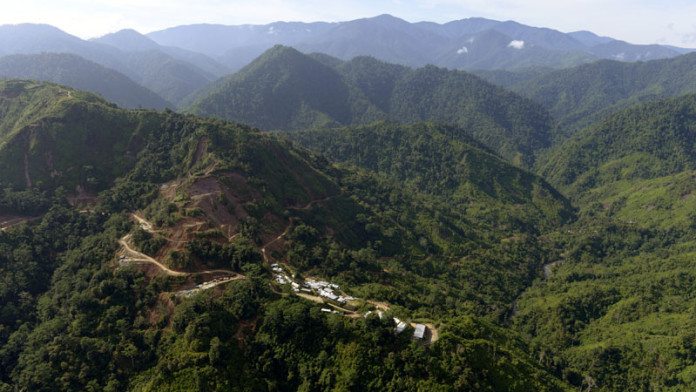
HARMONY Gold met full year production guidance but a delay in the permitting of its Wafi-Golpu project in Papua New Guinea exacerbated concerns about the firm’s long-term production profile and the cost of permitting the project, said analysts.
“We view PNG as a relatively high risk jurisdiction, and if permitting approvals are not forthcoming, development of the project could stall and exacerbate our concerns over Harmony’s long-term production decline,” said JP Morgan Cazenove in a note.
Harmony said in a 2019 operational update that production would come in at 1.44 million ounces of gold which is a shade below 1.45 million oz it set down in guidance.
Said RMB Morgan Stanley: “Consequent delays in the work program will increase permitting costs, but plans underway to mitigate costs”. The delay in permitting Wafi-Golpu was related to the election of a new prime minister.
In addition there were delays in legal proceedings over the distribution of PNG’s economic interest in the project between national and provincial government.
On May 30, PNG unveiled its new prime minister, James Marape, a former finance minister, who then said he intended to “tweak and turn” laws governing how natural resources are extracted from the South Pacific island. His election was followed by incidents of discontent among communities in PNG.
Granting of a Special Mining Permit for Wafi-Golpu have been a long-standing feature of getting the project on the road. Lauren Fourie, head of investor relations for Harmony said up until recent events that various joint venture work streams were tackling requirements of the permit which range from environmental authorisations through to the stake the PNG state will eventually hold.
The Wafi-Golpu copper-gold mine could cost Harmony Gold $2.82bn in initial capital expenditure to build to commercial levels of production as per a 2018 feasibility study. Of this, Harmony will shoulder about 50% with Newcrest Mining Limited, an Australian firm, carrying the balance. Average annual gold production was put at some 266,000 ounces.
Harmony is due to report its 2019 financial results on August 20.
As well as providing more details as to why its all-in sustaining costs (AISC) had come in higher for the 2019 financial year – between R550,000 to R555,000 per kilogram (R/kg) which is above R540,000/kg guidance – the group will also be asked about whether it intends bidding for Mponeng, the AngloGold Ashanti mine that is up for sale.
Harmony last year bought Moab Khotsong from AngloGold Ashanti and one thought among the investment community is that in adding Mponeng to its ranks it will begin to develop the cash flow that will help it afford Wafi-Golpu.
In any event, the short-term revenue picture is looking more promising for Harmony Gold which is particularly well place to take advantage of the stronger rand gold price.
JP Morgan said it recognised an “increasingly bullish macro backdrop for ZAR-denominated gold prices”, adding that whilst it was concerned about the structural decline in Harmony’s gold profile, short reserve life and high cost assets, these “challenges are favourable in the current environment”.
“High operating leverage allows Harmony to have highest earnings sensitivity to gold price among peers,” it said.








